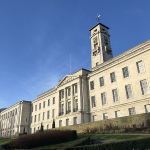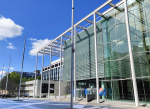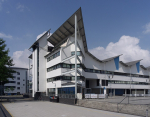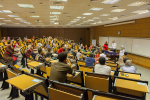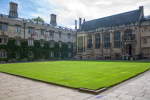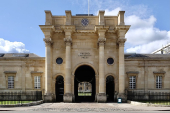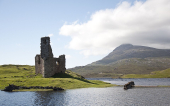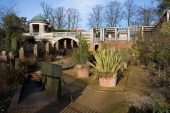Media
-
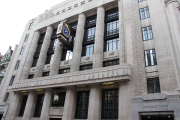 Daily Mail owner agrees £500m deal to acquire Telegraph titles
The publisher of the Daily Mail has struck a £500 million agreement to buy the Telegraph newspapers, bringing an end to months of uncertainty over the titles’ future ownership.22 November 2025Read More...
Daily Mail owner agrees £500m deal to acquire Telegraph titles
The publisher of the Daily Mail has struck a £500 million agreement to buy the Telegraph newspapers, bringing an end to months of uncertainty over the titles’ future ownership.22 November 2025Read More... -
 BBC reports £1.1bn loss as licence fee income falls amid viewer exodus
The BBC has recorded a £1.1 billion loss as growing numbers of viewers either cancel or fail to pay the TV licence fee, according to a new parliamentary report.21 November 2025Read More...
BBC reports £1.1bn loss as licence fee income falls amid viewer exodus
The BBC has recorded a £1.1 billion loss as growing numbers of viewers either cancel or fail to pay the TV licence fee, according to a new parliamentary report.21 November 2025Read More... -
 Trump says he still plans to sue BBC, despite its apology
Donald Trump says he’s moving forward with legal action against the BBC next week, even though the broadcaster has already apologised for misleadingly editing one of his speeches.15 November 2025Read More...
Trump says he still plans to sue BBC, despite its apology
Donald Trump says he’s moving forward with legal action against the BBC next week, even though the broadcaster has already apologised for misleadingly editing one of his speeches.15 November 2025Read More... -
 BBC apologises to Trump for edited Panorama clip — but says it won’t pay damages
The BBC has apologised to US President Donald Trump after a Panorama episode stitched together parts of his 6 January 2021 speech in a way that could imply he was directly calling for14 November 2025Read More...
BBC apologises to Trump for edited Panorama clip — but says it won’t pay damages
The BBC has apologised to US President Donald Trump after a Panorama episode stitched together parts of his 6 January 2021 speech in a way that could imply he was directly calling for14 November 2025Read More... -
 ‘We’ve got to fight for our journalism,’ BBC director general tells staff amid Trump lawsuit threat
BBC Director General Tim Davie has urged staff to “fight for our journalism” after former US President Donald Trump threatened to sue the corporation for $1 billion (£760 million) over a12 November 2025Read More...
‘We’ve got to fight for our journalism,’ BBC director general tells staff amid Trump lawsuit threat
BBC Director General Tim Davie has urged staff to “fight for our journalism” after former US President Donald Trump threatened to sue the corporation for $1 billion (£760 million) over a12 November 2025Read More...

Culture
-
At Britain’s first plant-based Michelin-Star restaurant, most diners aren’t veganAt Plates, the first fully plant-based restaurant in Britain to earn a Michelin star, the dining room is full most nights — yet the vast majority of guests aren’t vegan.Read More...
-
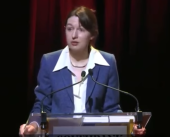 Sally Rooney warns UK readers may lose access to her books amid Palestine Action ban
Irish novelist Sally Rooney has told the High Court she may be forced to halt publication of her books in the UK — and potentially withdraw existing titles —Read More...
Sally Rooney warns UK readers may lose access to her books amid Palestine Action ban
Irish novelist Sally Rooney has told the High Court she may be forced to halt publication of her books in the UK — and potentially withdraw existing titles —Read More... -
 Cambridge Dictionary reveals ‘Parasocial’ as Word of the Year 2025
Cambridge Dictionary has selected “parasocial” as its Word of the Year for 2025, highlighting the growing public fascination with one-sided relationshipsRead More...
Cambridge Dictionary reveals ‘Parasocial’ as Word of the Year 2025
Cambridge Dictionary has selected “parasocial” as its Word of the Year for 2025, highlighting the growing public fascination with one-sided relationshipsRead More... -
 ‘Banksy’s ‘Girl with Balloon’ was stolen from my gallery – London is not safe for art’
The head of a central London gallery says he has abandoned his Fitzrovia exhibition space after a £270,000 Banksy print was stolen in a brazen smash-and-grab raid.Read More...
‘Banksy’s ‘Girl with Balloon’ was stolen from my gallery – London is not safe for art’
The head of a central London gallery says he has abandoned his Fitzrovia exhibition space after a £270,000 Banksy print was stolen in a brazen smash-and-grab raid.Read More... -
 London Art Fair to return in January 2026 with expanded global line-up
The London Art Fair will return to the capital from 21–25 January 2026, marking its 38th edition with an expanded roster of Modern and Contemporary galleries from the UK and abroad.Read More...
London Art Fair to return in January 2026 with expanded global line-up
The London Art Fair will return to the capital from 21–25 January 2026, marking its 38th edition with an expanded roster of Modern and Contemporary galleries from the UK and abroad.Read More... -
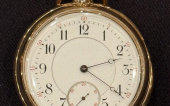 Gold pocket watch owned by Titanic couple could fetch £800,000 at auction
A gold pocket watch recovered from Isidor and Ida Straus — the elderly couple immortalised in the 1997 film Titanic — is expected to sell for at least £800,000 when it goes under the hammerRead More...
Gold pocket watch owned by Titanic couple could fetch £800,000 at auction
A gold pocket watch recovered from Isidor and Ida Straus — the elderly couple immortalised in the 1997 film Titanic — is expected to sell for at least £800,000 when it goes under the hammerRead More... -
 Blenheim Palace unveils luxury new summer festival with Katy Perry, Teddy Swims and Pete Tong
Blenheim Palace is set to join the UK’s major festival circuit next year with the launch of the Blenheim Palace Festival 2026, a new music and arts celebration staged against the statelyRead More...
Blenheim Palace unveils luxury new summer festival with Katy Perry, Teddy Swims and Pete Tong
Blenheim Palace is set to join the UK’s major festival circuit next year with the launch of the Blenheim Palace Festival 2026, a new music and arts celebration staged against the statelyRead More... -
 Jewish Small Communities Network celebrated in Parliament
Representatives from more than 50 Jewish communities across the UK gathered at the House of Commons on Wednesday for a Parliamentary lunch hosted by MP Andrew Snowden, theRead More...
Jewish Small Communities Network celebrated in Parliament
Representatives from more than 50 Jewish communities across the UK gathered at the House of Commons on Wednesday for a Parliamentary lunch hosted by MP Andrew Snowden, theRead More... -
 UK war memorials to receive £2 million preservation boost ahead of Remembrance Sunday
War memorials across the UK are set to receive a major funding boost as the government commits £2 million to safeguard tributes to fallen servicemen and women for future generations.Read More...
UK war memorials to receive £2 million preservation boost ahead of Remembrance Sunday
War memorials across the UK are set to receive a major funding boost as the government commits £2 million to safeguard tributes to fallen servicemen and women for future generations.Read More...

British Queen celebrates
Most Read
- Teen held after US woman killed in London stabbings
- Heave-ho Harry! Prince prepares to join the walking wounded in ice trek to North Pole
- Football: Farhad Moshiri adamant Everton deal above board
- "Master of English Style". Interview with Designer Lydia Dart
- Letter to the Financial Times from Lord Mayor Alderman Michael Bear
Education

Six green apprenticeships have been hand-picked by industry experts to mark the Coronation in recognition of their sustainability credentials, the Department for Education has announced

According to data from the Department for Education (DfE), more than half of state schools in England restricted access to pupils or were fully closed during teacher strikes by the National

Cambridge University students celebrated "Caesarian Sunday" with a fancy-dress drinking event on the college green, as thousands gathered to participate in the

The Duke of Bavaria, Franz Bonaventura Adalbert Maria, is first in line to the Jacobite succession for the British crown. He is a descendant of King Charles I's daughter

The Chief Rabbi of the UK, Ephraim Mirvis, has criticised a recent report by the Church of England that acknowledges Christianity's role in spreading and compounding

The Foreign, Commonwealth and Development Office (FCDO) has officially opened the ‘Phillips Room’ in its King Charles Street building in central London, dedicated to the extraordinary life

We must change our anti-maths mindset in order to boost growth, Prime Minister Rishi Sunak said today [Monday 17 April].

As primary schools across the UK reopen after the Easter break, parents of children entering primary school will soon find out which school their child has been offered

The blueprint for Pioneer - a long-term, bold prospectus programme to support research and innovation in the UK should association to the Horizon Europe scheme not prove possible - has

DJ Cuppy, the Nigerian music producer and recent graduate of the University of Oxford, has announced a £100,000 gift to support African students studying at the prestigious institution.










